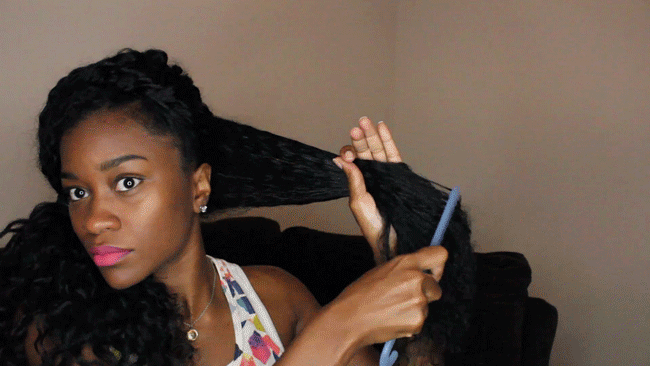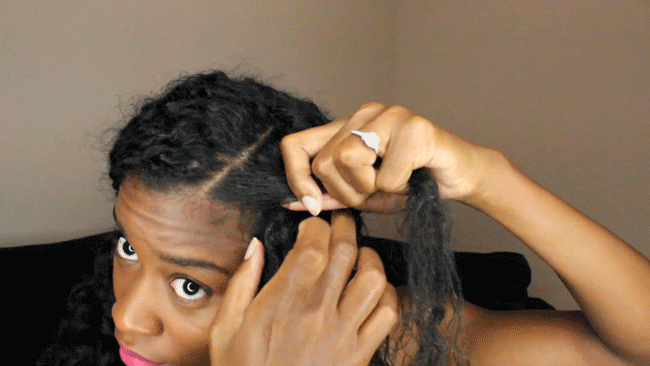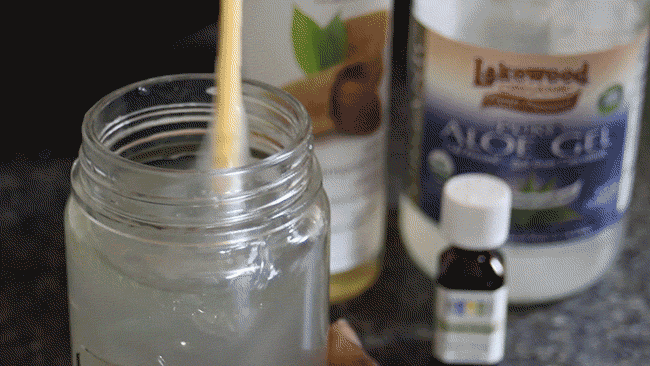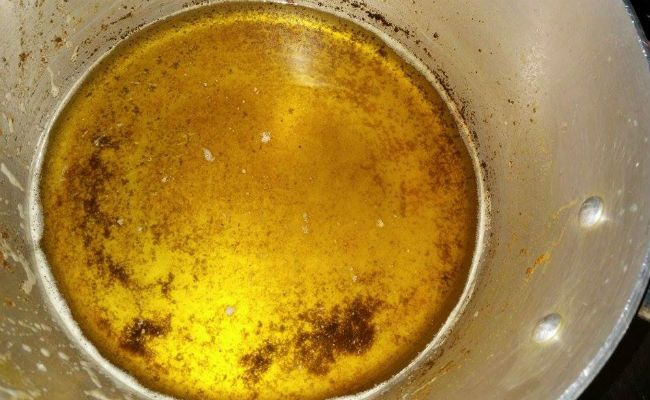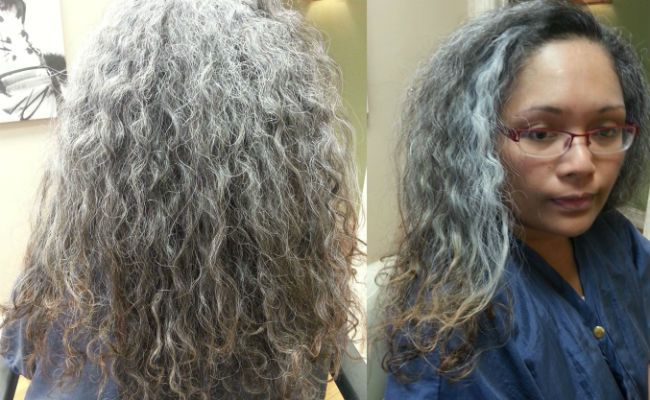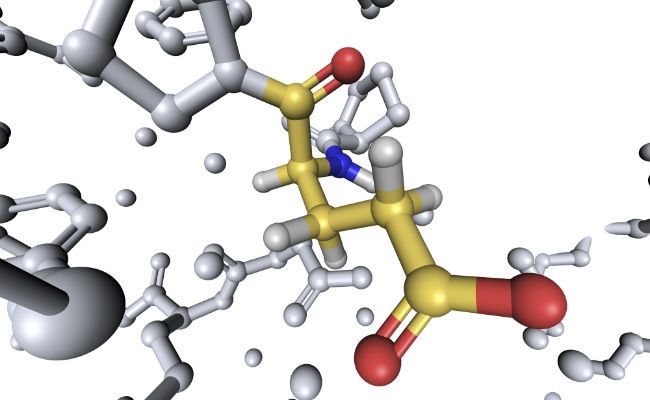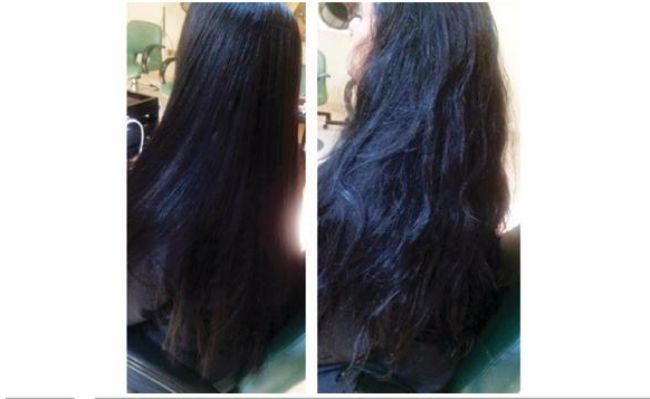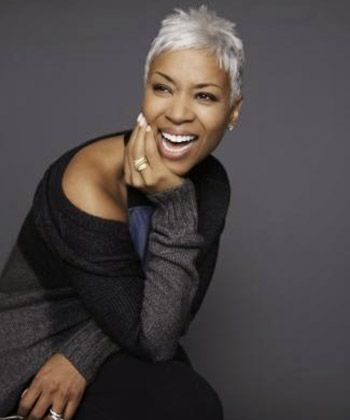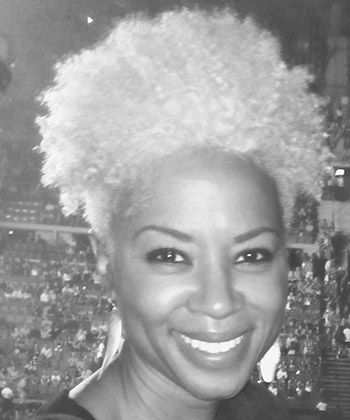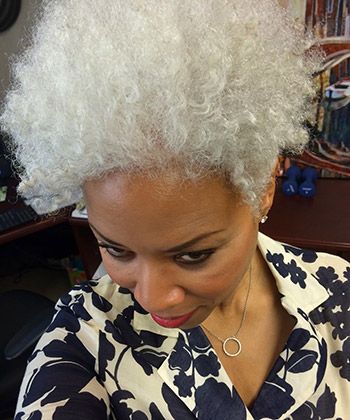Search Results: Akshay Joshi

In our Curly Q&A section we receive questions every day asking for advice, but this one caught our eye:
Question
“Frustrated, about to cut off all my curly hair, help. Tired of this and dealing with everything that has to do with curly hair. What should I do?”
Answer
Before I could properly address this question, I needed to ask her a few things:
What is the biggest problem you’re dealing with? What does your everyday routine consist of? (Don’t give up!”>
Her response
- I wash day every other day
- I co-wash 3 times a month with a clarifying shampoo
- I rock mostly wash and gos, and use the LOC method.
My suggestions
Experiment with products
And it doesn’t have to be a more expensive alternative–stick to your usual budget for hair care but next time, get a different conditioner or clarifying shampoo.Try a DIY recipe
There are lots of homemades concoctions that are tailored to other things you might not be considering, like porosity (since your ends are colored”>. This can be a cheaper route, too. And depending on the level of recipe, it can be a fun, relaxing personal treat to yourself. Have you tried coconut milk as a cleanser? One word: Heaven. And this is a more moisturizing option to clarifying with a shampoo 3 times a month–that could be a reason why your curls feel like a “rat’s nest”.
Modify your regimen
If the LOC method isn’t working as well as you’d like it to, do the LCO instead. Save your oil for last, and use a different oil. Many 3bs like yourself like argan oil or sweet almond–they are light, won’t weigh your hair down, but add plenty of moisture and sealing properties that will make your wash and go’s last longer. Most importantly, keep your regimen simple. It’s OK to be a lazy natural. Add a curl refresher to your routine, too. It can help you prolong your wash days so that you don’t have to keep washing every other day. That can be extremely drying to your curls, cause them be limp, or be over hydrated (known as hygral fatigue“>.Rock a different hairstyle
As we enter colder months of the year, now is a great time to try a protective style–Marley twists, crochet braids, or Ghana braids. Wearing a wash and go constantly can get pretty boring and tempt you to want to straighten. The great thing about these styles is that they are low maintenance; sure they take a few hours to install, but if you do it right, they will last a good month or two, which will give you a major break from styling everyday.Do you have a question for any of the NaturallyCurly editors? Post it here in our Q&A section.
Moisturizing conditioners typically increase the moisture content of the hair, improve elasticity and manageability. They work to add and retain moisture in the hair. Now when we talk about your hair needing extra moisture that doesn’t mean oil. Hydration is a main characteristic of water so increasing water really means replenishing water to the hair, and preventing or minimizing its escape into the surrounding environment. So anything that is going to help improve water retention in the hair is ideal for dry textured hair. There are many ingredients that will help and emollients and oils are among them. Additionally, using oils in conditioners can help nourish the scalp.
Anything that is going to help improve water retention in the hair is ideal for dry textured hair
There are several opinions about which oils are best for hair and it’s really up to you which oils will work best for your hair. However, there are some oils that seem to work better than others. Oils with low molecular weights or shorter fatty acid chains can penetrate the hair cuticle. These oils include:
- coconut oil
- murumuru butter
- babassu oil
Other oils may be too long to penetrate into the cuticle, and sit on top of the hair coating it increasing slip, improving softness and manageability, and adding shine to the hair. All of these benefits can remain even when the conditioner is rinsed from the hair. These oils are good for sealing versus moisturizing. They include:
- Jamaican black castor oil
- grapeseed oil
- jojoba
For dry hair, oils are important for another reason. Porosity is a key factor in the ability of your hair to maintain moisture. The more porous your hair is the more water it can absorb. Seems like a great thing but there is a flip side to this – it will lose a lot of moisture over time as well. Overly porous hair can be corrected with specific steps. Additionally, conditioners that contain oils can help seal moisture into the hair strand better than those without and this is important for helping to keep moisture in the hair.
Coconut oil versus shea butter
The two oils that are commonly used are coconut oil and Shea butter. Coconut oil is fantastic and there is a lot of science behind its benefits to the hair. Some people have expressed that their often feels drier and tangled from coconut oil and The Natural Haven has this comment to make about this experience:
“The straw like feel some people find with coconut oil is usually related to using too much product because coconut oil is not as viscous as other oils . Hardening of the hair is related usually to temperature because coconut oil solidifies at a fairly low temperature so a cold winter breeze can stiffen hair very fast.”
I personally have no issues with using coconut oil in my hair, especially when it’s used with other conditioning ingredients in a formula. My hair is extremely soft, flexible and moisturized. If you’ve played around with coconut oil and have found no benefit to your hair then leave it out or try fractionated coconut oil instead. It’s coconut oil that’s had a number of fatty chains removed resulting in a very light weight oil that still offers great moisture to the hair.
Shea butter helps to moisturize your scalp. It may be able to penetrate the hair shaft to offer moisturizing and can create a light occlusive layer to prevent further damage. It also contains allantoin that will help with reducing inflammation and increasing cell regeneration on your scalp.
The key to using conditioners with oils is really knowing why they are in the product and how they will benefit your hair. They are there to improve the condition of your hair, not make it worse.
This article was written by Susan Walker of Earthtones Naturals and published on CurlyNikki.
Follow Cyn (pictured above”> here:
How do using conditioners with oils affect your hair? Do you love them or loathe them?
Ebony is a radio host and curly hair vlogger, and we wanted to know – how does she detangle all of her hair? We were thrilled that she exclusively shared her tips with us on detangling long, curly hair. Subscribe to her channel, Ebony’s Curly TV and follow her on Instagram @EbSweetz for more of her long hair inspiration and tips.
Hey, y’all! I’m back with another video.
This time, I am showing you how I detangle my long, curly hair. I just took out my Senegalese twists, so my curls are still separated right now.
This is what I use:
- spray bottle filled with water
- wide tooth comb
- 100% pure, unrefined coconut oil
- optional: Denman brush
Rule of thumb for those with long hair like me: Don’t try to work on your whole head at once. I like to part my hair into sections so it is not as overwhelming. I start with the back, working my way to the front sections.
Before detangling, I wet a section thoroughly with my spray bottle. Detangling dry hair leads to weak hair which causes breakage and split ends. I work from the bottom up, NOT the roots down.
Once I finish detangling each section, I create a large flat twist. That way, when I get in the shower and wash my hair, it won’t re-tangle.
- How to flat twist: Take a smaller section from the section you are twisting, split it in half, and twist it down normally. Every time you take one strand and wrap it around the other, take a little bit of loose hair to bring it into the second strand.
If I find my hair is really tangled, I use a little bit of conditioner or coconut oil to make it slippery and easier. Start from the bottom and work your way up, do not start at the root. I continue the same routine for my remaining sections using a wide-tooth comb on dampened hair. If you prefer to use something to detangle further, use a Denman Brush at this point in the process.
At the end, I have 10 to 12 long flat twists/braids that are thoroughly detangled and ready to be washed!
Let me know if you have any questions in the comments below. Thanks for watching!Ingredients
- Flax seeds (golden variety”>: A natural wonder for strengthening the hair because of its concentrated sources of the good fat, omega-3, according to USDA Nutrient Database and Medical News Today. It also gives ample hold, perfect for a gel.
- Aloe vera gel: The Natural Standard Research Collaboration for Mayo Clinic says aloe vera is effective in curing scalp conditions like seborrhea and dandruff. It also has natural slip and moisture. It enhances naturally curly hair texture, too.
- measuring cup
- stocking
- resealable container or bottle
These are optional…
- Almond oil: This oil is ideal for adding natural shine, softness to hair while providing it with natural UV protection, according to Natural Living Ideas
- Sweet orange essential oil: It is affordable, with a strong, fragrance that lasts and is super concentrated, according to Aroma Web.
Directions
1. Boil 1/4 cup Flax Seeds in 2 cups of water. In 15 minutes, it should look gooey and become a thicker viscosity.
2. Place the stocking inside the container and wrap it around the rim. This will help you strain the seeds.
3. Pour the mix into the stocking to separate and strain the seeds from the gel.
How to add the optional ingredients
- Add 4 tablespoons of Aloe Vera for pH balance and moisture, a few drops of sweet almond oil for more slip and shine, a few drops of sweet orange oil for fragrance and softness. Only put it in the mix once it is cool, NOT hot.
- Pour into your reusable container. Don’t contaminate it with your hands–only use what you need. This batch is good for 2 to 3 weeks, so use it every day.
Watch the video
A bad haircut is like a bad relationship — we’ve all experienced at least one and we know we don’t want to go there again. No doubt, you’ve learned not to jump into a relationship with someone you don’t know. So why would you hop in the chair of a stylist without a clue — and then expect a great haircut — especially if you have curls or kinks?
Finding the right stylist (just like finding that significant other!”> is a slow, steady process that requires work, patience and a whole lot of communication. Here, we turn to the experts for the best clues to finding the right match for your curly mane. Expert stylists, such as Christo, spend lots of time with each client. Clients should never feel bullied into radical changes, says Jonathan Torch of Toronto’s Curly Hair Institute.
Find a matchmaker
Lorraine Massey of New York’s Devachan Salon says “If you see a curly girl and you love her hair, don’t hesitate to run up to her and ask her where she gets her hair cut. She’ll be more than happy to tell you because she likes to spread the curl love. Curlies also spread the word on the CurlSalons, where you can read (and post”> reviews of salons and stylists across the world.”Ask for a curl specialist
Ethan Shaw of Anne Kelso Salon in Austin tells us “If you call a salon and ask who specializes in curly hair, and their response is that everybody at the salon is a curl specialist, that is likely a red flag.” Lorraine Massey agrees, saying that “In reality, there may be one or two people at a salon who have really studied curly hair. What I hear is that when the client gets there, there’s a girl there that says she has curly hair but prefers to blow it straight,” Massey says. “That’s a red flag. Do not let anyone into your garden unless they love it as much as you do.”Schedule a consultation
Beth Abroms, Owner of Fiddelheads Salon in Washington shares that “it shouldn’t cost anything to just speak with a stylist for 10 to 15 min. or maybe all of $10 to $20 for somebody who charges because they do a lot of consultations.” And don’t feel obligated to get a haircut just because you had a consultation, “When you sit in that chair for a consultation, you have no obligation to get a haircut the same day” says Christo, Global Artistic Director of New York’s Christo Fifth Avenue Salon.Look at the stylist’s hair
“That’s a big consideration — looking at the hairdresser’s hair who’s cutting your hair. It’s mandatory that every day their hair looks good. How else do you teach people to look after their hair, if you’re not going to be looking after your own hair? You can always ask what type of scissor the hairdresser uses. Is it Japanese or German? They’re always the best quality. A razor in naturally curly hair is the equivalent of taking a match to the ends of your hair. Ask about the curly products they have” says Lorraine Massey.Watch out for the heat tools
If you have been to a hair salon, then it is highly likely you’ve been faced with a flat iron. If you want to straighten your hair that’s fine, but if not, feel empowered to speak up. “You’re going to see [the flat iron] because it’s rampant in our industry. They’re almost surgically attached to their hands. But what the curly girl has to understand is that the hairdresser is seeing her, not the lady next to her, not the lady in the magazine. You just tell them ‘This is what my hair does, and I don’t want to be anything other than myself.’ You can make that clear and see how the hair dresser reacts. It is your hair, after all! The salon can be odd, but the stylist can be amazing. Some work individually and they can just have their own little bubble” says Massey. And “if they bring the blow-fryer out, don’t be a shrinking violet.” Massey recommends saying “‘Excuse me, I’m naturally curly and would you mind me leaving with my hair natural today? This is how I wear it.’”
Ask the right questions
Christo recommends asking “How can I manage my curls? How can I get my hair to feel or look healthier? How can I cut my hair without looking like it has too much volume? I would like to take some bulkiness from the bottom layer of my hair without thinning the hair out. How can I do that? Well, that can be done with the correct frame around the face.” And if you don’t know what to ask, just bring pictures. “No matter how great the style, if you are not ready for the change it will not be successful. Our experience has shown that some clients don’t know exactly what they want, but they do know what they don’t want in a style. Pictures can help bridge the gap in communication during the consultation” says Jonathan Torch of Toronto’s Curly Hair Institute.Listen for buzzwords
“If you hear the word ‘layers’ in the first sentence, then I suggest you walk out of the salon politely. Or if the stylist says, ‘I think we should thin your hair out because you have a lot of hair,’ those words will probably cause a terrible haircut at the end of the day. If you don’t understand, ask them. They may say, ‘Let’s de-volumize’ the hair.’ Then, you say, ‘It sounds very attractive. But can you explain to me how you’re going to do that?’ It’s very important for you to know what you’re getting done” says Christo.Ask if they cut wet or dry
“It’s really important that you look at the hair at its resting point when the hairdresser sees you. When it’s wet, you would never see the different formations of each curl and they’re all completely unique — some are tiny, some are looser. If you pull them down together when they’re wet, they may look the same length. But when they dry, curls recede at different lengths. You can say, ‘Let me just point some things out. Please listen. I’m going to pull this curl right now, and see how much it springs? And these curls are looser on this side also Show them the different personalities of your hair. Cut the length dry. Cut the area around the face dry. Cut the top layer dry. You can see exactly where you’re pinpointing the length. Then, if you must, cleanse the hair and use those points of references as your landmarks. You don’t go past those points” says Lorraine Massey.Be demanding
Massey says “It breaks my heart. A lot of people are truly ignoring the needs of the curly girl. We’re a totally misunderstood, misinterpreted hair type — still! Even if you just say, ‘Okay, maybe I won’t get a cut from you today. But if you ever do get someone who is educated in curly hair, please call me because I would love to come to her. Then the salon will think, ‘Oh, we better start getting savvy here with these curly girls because they’re becoming very demanding.’ We should be demanding. It’s time, and we can only do it as a curl-lective!”This post was originally published in 2006 and has been updated for grammar and clarity.
According to Sarah Bridge of The Daily Mail, slathering butter on hair and scalp started as a wedding tradition for a number of Ethiopian tribes like the Afar, Borana, and Hamar. The men adorn their nature-given crowns with ‘asdago’ afro styles. It serves as a way to “protect their scalp from the sun, keep their afros and dreadlocks in place,” and is seen as a blessing. Sometimes, other men will spit atop the head to add their blessing to the newlywed couple.
Many Ethiopian tribes slather butter onto their hair and scalp, protecting it from the sun–and to bless themselves during their wedding.The Desi Dossier says she first heard about this on-the-hush hair treatment from a friend who would travel to Ethiopia and get them there, “where home made clarified butter (ghee”> is applied to hair and leaves hair really healthy.”
What You Need
- A lump of unsalted butter (use organic if you can, I didn’t have any”>
- A saucepan
- A closeable container
1. Cut the butter into cubes and put in the saucepan on a low heat until it melts.
2. The butter will start melting, boiling, and separating into a foamy layer and a golden one.
3. Begin skimming the foamy one with a spoon.
4. Once you remove the foamy, white layer completely, strain the golden liquid through a metal sieve.
5. Let the butter cool for a few hours before using it for the first time.
Use a spoon to scoop the butter out in the future (so you do not contaminate the jar”>. Before using, warm your amount up and then apply to your hair for super penetration. Store away in the fridge and use as needed. Keep this batch for 3 to 4 weeks before making another one.You rely on it every day to sterilize your household items in the kitchen and bathroom. You use it in your tea for a sore throat, and on a wound to speed up the healing process while providing a clean protective layer. But have you started using lemon essential oil in your hair? You should.
Lemon juice contains 5 to 6 percent citric acid and has a low pH balance, meaning it is considered the perfect all-natural antibacterial agent.
First discovered in the Mediterranean regions of Spain and Portugal, lemon oil has a long valued history in its herbal and medicinal contributions throughout the world and even still today. Sustainable Baby Steps says “it requires about 3,000 lemons to make one kilo of lemon essential oil (Citrus limon“>.” So, while this essential oil is widely popular and attainable at most health, beauty, and natural food store, it is still precious and deemed highly valuable in its benefits.
What does it do?
Balance sebum production
For oily skin and scalp, lemon oil works to balance out their extra sebum production. Add four drops to wet hands and massage it through your hair on wet, not soaking hair after every co-wash. It will, over time, reduce your need to use a shampoo as frequently.
Antiseptic
Lemon is also a well-known antiseptic that effectively disinfects minor cuts and wounds in the scalp you may not even knew you had. According to Uncle Harry’s, “the oil has many different properties, one of the most important being its ability to activate the white corpuscles that defend the body against any infection.” Did you just take down a protective style that may have agitated your follicles? Use some lemon essential oil to rejuvenate your scalp back to normal.
Aromatherapeutic effects
If you tend to do your wash routine in the mornings, lemon essential oil is a great addition. It will wake up your body and mind with its potent, fresh scent.
Products with lemon oil
Lemon oil works on literally every hair type–from straight to coily, and from dry to oily. Here are some products that will help you get your lemon fix.
Aubrey Organics Biotin Repair Scalp Tonic
This treatment is packed with a long list of beneficial ingredients that provide the vital nutrients a scalp needs for healthier hair growth. It contains growth encouraging biotin, nourishing nettle extract, and smoothing burdock root.
Kiehl`s Olive Fruit Oil Nourishing Conditioner
If you are looking for a conditioner that will make hair feel thicker, shinier, and more luscious, this is it. Made with olive fruit and avocado oils, it provides necessary protein that helps fine hair feel fuller and look more vibrant.
Jane Carter Solution Hair Nourishing Serum
Why not get multiple citrus essential oil benefits in one bottle? This lightweight stimulating scalp serum fills the cortex of each follicles with important vitamins that will restore damaged, dry hair.
Desert Essence Organics Hair Care Shampoo
This gentle cleansing shampoo also contains Leptospermum Petersonii Oil, which falls into the tea tree oil category. Together, this and lemon oil provide nourishment to an inflamed, itchy scalp and soothe hair.
Have you used lemon essential oil on your hair yet?
[prodmod]Curly hair specialist Melanie Nickels is founder and president of Naples, Florida based salon and product lines Raw Hair Organics, Inc. She is also founder and president of Melanie A. Nickels Nutz & Boltz Foundation and has been working as a stylist for over 18 years, and working in the organic salon business since 2007.
When did becoming a curly hair specialist become a passion of yours?
I have always had an interest in curly hair since I am a curly girl, but I really started taking it seriously in 2009 when I started training in curly hair. I was hearing about specialty cutting techniques for curly hair and that just made sense to me.
You have a product line called Raw Curls. What makes this line necessary for people with curly hair?
The 2 most important things for curly hair are the right cut and the right products. Raw Curls products are perfect for curly textures because they are gentle, moisturizing, and pure. My products deliver outstanding results using organic ingredients that leave the hair healthy, shiny, and frizz-free. I tell my clients that using Raw Curls products is like taking supplements for the hair and scalp.
You also have a pet care line.
We actually put the pet line on hold to launch the Raw Curls, which I feel was a good decision. We are hoping to bring the pet line out in the near future.
What is the biggest mistake you often find yourself correcting on your clients’ hair?
When new curly clients come to me the thing I see a lot of is what I have termed the “jellyfish.” This is when there is a big shelf in the hair like a bushy triangle or mushroom, and then stringy dangles that hang down (pictured above”>. Also, I see a lot of stripy over-highlighted hair.
What’s the biggest piece of advice you wish you could tell every curly out there?
Spend money on your hair–you wear it everyday! It is so worth paying for a truly specialized curly cut and great professional products that are healthy for you and your hair.
How can we keep up with you online and book an appointment?
Our website is www.rawhairorganics.com, Facebook: Raw Hair Organics, Twitter: @RawHairOrganics, Instagram: MelanieNickels1, blog: thehaircolorreview.com
In my opinion, your shampoo may be the most important product in your arsenal. I say that because a good shampoo keeps your scalp healthy (which means better hair growth”> and makes your hair easier to comb. A bad shampoo will lead to drier hair, scalp irritation, and unstoppable frizz. Your shampoo is truly the first step to smooth, manageable hair. You need a good shampoo in your life!
The best shampoos contain:
- Sulfate-free cleansers to prevent excessive dryness and scalp irritation
- Cationic ingredients to condition your hair while you cleanse
- pH adjusters to balance the pH of the shampoo and prevent unnecessary cuticle damage to your hair
Sulfate-free Cleansers
Have you noticed all the “sulfate-free” shampoos popping up? It sounds like classic marketing hype, but there are a few good reasons to avoid sulfate-based cleansers. Every cleansing product, whether it’s shampoo, dish soap or laundry detergent, contains surfactants. Surfactants are the ingredients that allow oil to be dissolved from a dirty surface. If you put dish soap on a pot and leave it to soak, you’re waiting for the surfactants in your dish soap to break up the grease left from your food. Sulfate-based surfactants like sodium lauryl sulfate and sodium laureth sulfate have been used in shampoo for many years, but current scientific research has found them to be significantly irritating for the scalp and drying to the hair.
Does that mean your hair will drastically change if you use a “sulfate-free shampoo”? Probably not. Most women are using sulfate-based shampoos because that’s the majority of what’s on the market. Even if a shampoo contains sulfates it can still be formulated to work well for your hair. However, I want you to have the most up to date information and the reality is there are better options for cleansing our naturally dry strands. To find the gentlest shampoos, look for products that contain at least one of the surfactants listed below in the top 5.
Gentle surfactants to look for
- Sodium Cocoyl Isethionate
- Disodium Laureth Sulfosuccinate
- Sodium Lauryl Sulfoacetate
- Sodium Methyl Cocoyl Taurate
Harsh/Drying surfactants to skip
- Sodium Laureth Sulfate
- Sodium Lauryl Sulfate
- Ammonium Lauryl Sulfate
- Ammonium Laureth Sulfate
- Sodium Myreth Sulfate
- Saponified Oils
- Soap
Conditioners and Cationics
You should condition your hair at every step of your routine…during cleansing, after cleansing, and before styling. It probably seems like shampoo can’t cleanse and condition at the same time, but cosmetic chemistry makes it possible. You know how clothes get stuck together in the dryer and they make a popping sound when you pull them apart? That happens because of something called static charge. Curls and coils naturally have a negative charge that causes constant frizz and fly aways. You can make your hair smoother and easier to comb by choosing a shampoo that contains positively charged conditioning ingredients called “cationics”. The ingredients listed below spread over your hair while you lather the shampoo and they stay locked to your strands while dirt and product residue rinse away. The cationic ingredients in your shampoo will increase the effects of your conditioner.
Cationics to look for in your shampoo (the more the better”>:
• Amodimethicone
• Guar Hydroxypropyltrimonium Chloride
• Polyquaternium-7
• Polyquaternium-10
• Polyquaternium-11
• Polyquaternium-44
• Polyquaternium-47
pH Adjusters
Is your shampoo pH-balanced? Chances are it is, but does that really matter? The answer is actually yes! The pH value of a liquid tells you whether it’s an acid (like orange juice”> or a base (like baking soda mixed with water”>. pH values below 7 are acids, values above 7 are bases. Skin and hair are made of keratin proteins and all types of protein are sensitive to pH. Our skin and hair can better maintain their natural strength when they are kept at acidic pH values between 4.5 and 6.5. Manufacturers don’t make shampoos with pH values below 4.5, but there are a few shampoos out there that are above 7. When the shampoo is basic instead of acidic, the outer cuticle of your hair will swell excessively when you lather up. When your hair dries later, you’ll be left with the kind of volume you don’t like…stubborn frizz and tangles. Shampoos that are pH balanced help the cuticle resist unnecessary swelling.
Most shampoos sold at drugstores and beauty supplies will be pH balanced. It’s standard practice for manufacturers to add pH adjusters to shampoo. If you’d like to test the pH of your product at home, I recommend Micro Essentials pHydrion plastic pH indicator strips.
Recommended Shampoos
All of these shampoos are sulfate-free and safe for color-treated hair.
L’Oreal EverCreme Intense Nourishing Shampoo
$7 for 8.5 oz, available at drugstoresYou can’t beat the price of this shampoo for the quality. A very small amount of product produces a rich, easy to spread lather. Make sure to look for the word “Intense” on the label.
Giovanni Colorflage Daily Color Defense Shampoo
$9 for 8.5 oz, available at Vitamin Shoppe and Amazon.comThis shampoo contains “copolymers” which help hair dye last longer.
Free Your Mane Sulfate Free Hydrating Shampoo
$16 for 10.14 oz, available at FreeYourMane.comFree Your Mane products were designed with Type 4 natural hair in mind. This shampoo lathers quickly and contains a high level of conditioners.
Carol’s Daughter Chocolat Smoothing Shampoo
$18 for 8.5 oz.Available at Sephora and CarolsDaughter.comThe Chocolat Smoothing Shampoo is the newest and best shampoo in the Carol’s Daughter line. It’s similar to the L’Oreal EverCreme shampoo, but it contains more conditioning ingredients.
CURLS Curliscious Curls Cleansing Cream
$15 for 8 oz.Available at Target, Sally Beauty, and Curls.bizThis cleansing cream is the best choice for those who prefer to wash daily because it contains very mild cleansers. It’s definitely worth trying if co-washing doesn’t agree with your scalp.
[prodmod]This article was originally written by chemist Nicole Harmon and published on CurlyNikki.
Whether you are a seasoned natural veteran or a newbie who just had her big chop, chances are you have come across an abundance of information regarding all of the important factors that make for a healthy natural hair journey.
Has ‘amino acids’ come across on your screen once or twice? You know you should pay attention to these nutrients, but not quite sure why. Well, here’s the breakdown on why they are important to your overall health and hair regimen.
Amino acids are completely natural micronutrients, which have significant benefits such as supporting hair growth. They are your body’s protein building blocks.
According to the doctors at AminoAcidStudies.org, “Amino acids are completely natural micronutrients, which have very significant benefits such as supporting hair growth, maintaining cartilage in joints (treating arthritis”>, improving circulation, immunity, and others…”
Your skin needs them
Studies have shown that amino acids through supplements and topical beauty products can lead to an even complexion, improve the appearance–wrinkles, fine lines, sun spots, stretch marks, and more.
There are 4 major amino acids for skin care:
- Proline
- Glycine
- Leucine
- Lysine
Together, they work together to provide antioxidant powers to strengthen the skin and also act as an exfoliant to boost moisture retention on the newer layer of skin underneath your Epidermis (the outer layer”>. Your other layers Subcutaneous, and Dermis equally benefit from amino acids for protecting them from potentially harmful environmental factors. Because of this, amino acids are used in various anti-aging products. Love to Know says they might trump the popular ‘alpha hydroxy system’ in effectiveness when it comes to smoothing skin and improving an even tone. Right now, there are 2 trending amino acid treatments: AFA (Acid Filaggrin Antioxidants”> and Amino Genesis.
The skin conditions that see improvement from products with high amino acid content:
- Rosacea
- Psoriasis
- Chronic Dermatitis
Your body needs them
Amino acids can be incorporated into your diet to reap the benefits of them, as well. Leafy greens, fish, nuts, beans, and soy are all rich in the above amino acids, which have been proven to improve your immune system, ease the pain of those with Fibromyalgia, and even your body’s natural sleep pattern. According to a study by University of Arizona’s biochemistry department, your body produces 10 out of 20 amino acids. The other 10 must be supplied by food.
We produce these 10 amino acids:
- Alanine
- Asparagine
- Aspartic acid
- Cysteine
- Glutamic acid
- Glutamine
- Glycine
- Proline
- Serine
- Tyrosine
- Arginine
- Histidine
- Isoleucine
- Leucine
- Lysine
- Methionine
- Phenylalanine
- Threonine
- Tryptophan
- Valine
Your hair needs them
Amino acids are your building blocks of protein. The 3 layers of your skin, cuticle, cortex, and medulla, need amino acids for a number of things. L-lysine positively affects the synthesis of collagen in hair, which improves elasticity–this means bouncier curls for you. It also reduces daily hair loss and thinning–specifically, androgenic alopecia.
The following dietary and supplemental amino acid treatment serums can be found in your local natural grocery store:
- NOW Foods Amino Complete Caps
- Bragg Liquid Aminos
- BSN Amino X- Watermelon
- Vitacost L-Lysine Capsules
You can also get your amino acid fix with these hair products:
Are baking soda and apple cider vinegar really the best for cleansing your natural hair? Find out below!
Are you familiar with The Natural Haven blog? The name sounds like it’s about natural products but it’s really about the the science of natural hair, in other words hair that hasn’t been chemically processed. It’s written by a scientist who goes by the name of “JC” and she posted a very interesting piece on evaluating different types of mild cleansers.
She did an experiment where she collected her own shed hair which she divided into several groups: a negative control group that was left dirty and oily. A positive control that was washed with regular shampoo, and several test groups which she washed with different types of cleansers. then, and here’s the cool part, she took micrographs of group to determine how well the test products cleaned.
Here’s what she found:
- Best cleansers (all of the oil removal”>: shampoo, oat water (oats boiled in water to release natural saponins”>, and natural soap bar.
- Good cleanser (most of the oil removed”>: Hair conditioner (cowash”>, liquid castle soap, and clay.
- Poor cleanser (little to no oil removal”>: Baking soda, Shikaki (crushed acacia pods”> and the worst of all Apple Cider Vinegar.
The reason I mention this story is that It’s refreshing to see someone look for evidence rather than just say “ baking soda and ACV are best for cleansing your hair.” So kudos to you JC of The Natural Haven! The Beauty Brains salute you!
Some curlies swear by ACV rinses and others only co-wash, but as you’ll quickly find on your curly hair journey, what works for one won’t work for another.
What’s your cleansing regimen?
This article was originally published on The Beauty Brains and shared on CurlyNikki.
According to the University of Chicago Medicine, men and women shed an average of 50 to 100 hairs per day, and 90 percent of hair grows continuously. The other 10 percent stays in a “resting phase” for a few months until it sheds. However, some people experience more shed hair, or hair loss, than others. A number of things contribute to hair loss, including aging, hormones, stress, and illness. Other lesser known reasons for hair loss include excessive vitamin A intake and pattern baldness caused by hats, headbands, or eyeglasses. It is typically more prevalent along the hairline, or vertex, of the scalp.
Thankfully there are number of hair loss treatments available in the hair care or vitamin section of most grocery and wellness stores. Next time, take a look at the main ingredient on the box of each product and you might notice one word that they all have in common: Minoxidil.
Understanding the real of baldness
Ryan Doss for Livestrong tells us how pattern baldness occurs–first, testosterone is converted into dihydrotestosterone or, DHT. Then, “it has the ability to bind to special receptors on hair follicles. Individuals with a genetic predisposition to male pattern baldness have similar receptors on the hair follicles in their scalp that, instead of promoting hair growth when bound by DHT, actually thin hair and cause hair loss.”How does Minoxidil work?
The National Institutes of Health (NIH”> says “Minoxidil is used to stimulate hair growth and to slow balding.” It prolongs the growth phase of hair follicles by widening them and prolonging the anagen stage of hair growth. This increases the density of the affected person’s hair. The exact cause of how Minoxidil works on a physiological basis is still unknown but since being FDA-approved in 1988, this drug has been proven to show exceptional results in slowing hair loss.Quantity and application
Originally intended as a blood pressure solution, Minoxidil topical now comes in pure form as a liquid with either an extender spray, dropper, or rub-on applicator for easy application to the scalp. Walgreens has a 2% women’s Minoxidil topical solution in a 3-month supply. For men, Rogaine offers a 5% 3-month supply in the form of a foam. These companies usually advise to not exceed usage twice daily. It is important to know that overusing this drug will not produce faster results.Note: Ask your doctor before using topical Minoxidil. It is not to be confused with oral Minoxidil. This advice is not intended to be replaced with that of a licensed professional.
Britney Spears and Iggy Azalea are trying to bring a (bad”> 80’s trend back.
True 80s babies can officially hide underneath a rock while the ugly crimped hair trend swings through for a comeback. Did you watch the Britney Spears and Iggy Azaela video for Pretty Girls? Neither did we. But based off of the overload of screenshots (AKA future memes”> found on the internet, there was no shortage of tacky neon fashion accessories, crimping irons, and crop tops on set. We’ll pass on the crimpers and rock our natural curls instead.
One writer’s take on living with curly hair care helps us relate…
Life has been no walk in the park for curly girl Maggie Lange. And if the elements have anything to do with the situation, forget about it. (“Any droplet could start a butterfly effect of frizz.””> But if years of experience dealing with an untamable mane account for anything, Maggie has got your back. She offers her fellow NY Mag followers the top 5 must-know tips all curlies should follow, stat.
…While another writer reminds us why laying off the flat irons was a good call.
No matter where in our natural hair journeys we may be now, we all remember the freakily obsessed days with our crispy flat irons. And if we ever act too good to remember, Seventeen writer Jelani Addams sure does bring us back to what once our everyday reality. We sure are thankful for it. She shares her horrific experience badly heat damaging her coarse textured hair and how it scarred her for life– no pun intended.
Oh, you didn’t know? Hair Botox is a thing now.
For those of us who have failed luck with numerous deep conditioning protein treatments and are desperate to repair our hair damage, look no further. There’s a revamped version of “Hair Botox” –it’s called Elite Hair Protein, and it helps the hair follicles strengthen by coating and hardening them with collagen and other necessary proteins. Eve Salon in Jeddah, Saudi Arabia specializes in the treatment. Rehab, a specialist at the salon says this Hair Botox is multipurpose: “The treatment enables hair recovery, growth, strengthening through three attained results: intensive conditioning and damage recovery of hair strands, strong coating on hair follicles that eliminates hair breakage and prevention of split ends, and texture nourishment that ends hair knots and hair fall.”
Ombre isn’t going anywhere–you can thank Foilyage for that.
Bayalage, dip dyeing, contouring, pixelated, ecaille, ombre. All of the trendy, edgy hair coloring techniques your salon constantly tried to lure you into trying. If you’ve colored your hair in the past say, two years, chances are you have tested ombre out for yourself. Now in 2015, it’s attempting another go with the millennials. Enter: Foilyage. Similar but also different from the “streaking” method circa our Nsync and Britney Spears idolization era, this hair coloring technique was developed by Hitomi Ikeda, combining “free-hand painting with foil highlighting.” Will you ask your hairstylist for this?
Seborrheic dermatitis is often mistaken for regular dandruff. Head and Shoulders defines seborrheic dermatitis as the “scalp’s extreme reaction to the presence of irritants – when the scalp becomes highly irritated, it gets inflamed, and skin cell turnover starts happening too rapidly. This acceleration leads to large clumps of cells forming at the scalp surface, becoming visible flakes.” It is often associated with an overproduction of sebum with large white or yellow flakes that are adhesive to the scalp. Most of the people in my family, including myself, live with this condition from cradle to grave and this is how I maintain a flake-free, itch-free scalp.
Cleanse weekly
Cleansing once to twice a week is important. The overproduction of oil only further irritates the inflammation and therefore it needs to be removed frequently. When I am not being lazy, twice a week will leave me completely without flakes and sores. Depending on the severity and your doctor’s orders, you may need to use a prescription shampoo or a medicated shampoo that is specifically formulated for your scalp condition like the following:
- Head & Shoulders Clinical Strength Shampoo
- Neutrogena T/Gel Shampoo
- Neutrogena T/Gel Extra Strength
- Neutrogena T/Sal Scalp Build-Up Control
From past experience, these shampoos feel amazing on the scalp, especially the T/Gel Extra Strength. The tar leaves your scalp with a cool, minty sensation that is amazing. I discontinued using the shampoo for no specific reason other than going natural and the severity of my condition abated. Always remember to deep condition after cleansing, as you want to restore the hair’s pH and replenish it with the nutrients it lost while washing, especially with medicated shampoos. One major factor that is often overlooked and equally as important as shampoo is the technique.
Section and hold the hair taut
The scales or flakes from seborrheic dermatitis are usually quite thick. Google cradle cap and it is the adult version of that. Because of this, it is important to make sure that you are sectioning the hair and applying the cleanser directly to your scalp. It is easy to fault the shampoo as ineffective if you are applying it to the length of the hair and hoping the lather reaches the scalp. When cleansing you want to hold your ends taut with one hand while scrubbing with the other. This will help to prevent your hair from retracting and tangling as you try to uplift the flakes. Sectioning is also essential when you rinse. You want to section within sections and make sure the water stream is rinsing away all of the debris.
Use a scalp brush
One of the best inventions ever made. Everyone’s condition varies and for many the scalp is covered in scales, so it is important to thoroughly exfoliates every inch of your scalp, especially where you flake the most, which for me is around the front of my hairline and my crown. You do not want to use your nails, as they can be too abrasive for your scalp and could cause bleeding (shamefully raising my hand”>. If you do not want to purchase a scalp brush then use the pads of your fingers and gently scrub.
Do not oil your scalp
Unless you receive a medicated treatment from your doctor, do not oil your scalp. Your scalp already produces too much sebum and this will only agitate the condition. When your scalp is becoming itchy and flaky, that is simply a sign that it is time for another wash.
If you must protective style…
If you opt to protective style, then I strongly encourage braids first, wigs second, and sew-ins never. Braids allow for convenient access to the scalp, which makes for easier removal of the flakes. With seborrheic dermatitis is important for the scalp to breathe, so if it is between a sew-in and a wig, go with the wig, as it can be removed nightly. I strongly advise against a sew-in because of the flakes. The scales from seborrheic dermatitis develop completely different from standard dandruff. Scales from sebborheic dermatitis tend to be much larger and wrap around multiple strands of hair, which is difficult to thoroughly remove from hair that is cornrows underneath extension hair.
This is how I manage my seborrheic dermatitis, and at the end of my wash day I am left with a refreshed scalp and no scales.
What does wash day look like for your scalp condition?
[prodmod]Dana writes:
I have gray roots and the remainder of my hair is light brown with dark brown ends. My hair is damaged from coloring and over pressing. I would like my hair to be a dark plum or auburn color and healthy. My natural color is dark brown. What kind of henna or combination should I use?
CurlyNikki says:
Celebration will be your best bet as it has a very high dye content (3.4% lawsone”>, and yields a deep auburn color over time. Remember that multiple applications will be necessary for your grays to darken to the color you want. I have many gray hairs and I’ve been hennaing (with Jamila, Yemen, and Henna for African Hair”> for years. All of my grays are now a rich, auburn color… gorgeous. The rest of my hair is fuller, shinier, and healthier looking. It’s a rich, shiny black color indoors (with a few red highlights”>, and glows auburn in the sun… like a rinse.
When new grays come in or my roots show, I simply apply an overnight treatment, and after a couple of days, it oxidizes to a nice bronzey red. After another treatment, the roots match the length– auburn.
For you, the key will be:
- Four hour (or more”> treatments
- Multiple applications (for darker results”>
- Cleansing prior to application. Although I don’t really do this anymore, if you have a lot of grays, this step is crucial. It will remove buildup and sebum, so that the dye can make the best contact with your roots.
Also, be sure to do lots of conditioning afterward to keep your hair moisturized, elastic, and supple. If your ends (and length?”> are indeed damaged, and you’re not interested in a Big Chop, you probably want to schedule some micro trims.
Real life example
My aunt Toney has been a redhead since I can remember. She’s naturally a medium to dark brown, but used boxed dyes to maintain a light auburn. A couple of years ago she transitioned to natural color with henna. Above is a pic of her shortly after starting henna (applying the paste to her grays and color treated strands”>.
This is a picture of her in February after many treatments. In person, her hair is a dark, rich, auburn (noticeably red indoors”>, and her grays (especially near her roots”> are a shade or two lighter (similar to the darker parts of her hair in the pic above”>. It’s an awesome color contrast and she gets tons of compliments.
This article was originally published on CurlyNikki.
Roanoake, Virginia brothers Willie and George Muse knew nothing other than intense criticism and fascination from their fellow classmates, family members, and neighbors since day 1. They were often seen as a spectacle of some sort because of their unique look–both brothers had long free-form locks and were albino black men.
Willie and George were kidnapped in 1899 by sideshow agents who scouted people for their circus acts.
Willie and George were kidnapped in 1899 by sideshow agents who scouted people for their circus acts. Though they were young, the brothers immediately were sent to work by the agents and thus a circus freak act career had begun.
Kidnapped, sold off, and exploited for their appearance
Initially called “The White Ecuadorian Cannibals Eko and Iko”, Willie and George attracted little attention by crowds and their agents experimented with an array of different titles for the pair, from “The Sheep-Headed Men” to the “Ambassadors From Mars” which later was changed to “Men from Mars”. They toured with The Ringling Brothers and Barnum & Bailey Circus throughout the 1920s, even performing at Madison Square Garden and bringing in about 10,000 spectators–a record at the time. One day in 1927, the brothers were finally freed from their owners/agents when they were rediscovered by their mother. It was around that time that the brothers decided to take legal action in regards to the lack of compensation they had been receiving during their tour. Through a long string of courtroom visits, Willie & George finally settled for a small flat monthly wage.From the 1930s to 1961 the albino brothers performed for the likes of the Queen of England and all across the globe in Australia, Europe, and Asia. Their new contracts allowed them to make more money than they had ever imagined while locked within the confinement of their previous captors.
Returning to their roots
Ending their career performing with the Clyde Beatty Circus, Willie and George Muse decided to retire and settle back down in their hometown from which they were abducted as young boys. They came together to purchase a house for their mother, both never married, and enjoyed their retired days of leisure and success with money and newfound popularity. In 1971, George passed away due to unknown circumstances, and his brother Willie, who died in 2001, lived to be 108 years old.
The story of the Muse Brothers sparked a revolution in the entertainment industry for decades to follow. Two odd looking brothers with African features yet pale white skin and natural hair were taken from everything they’d known and used as objects of entertainment for people who simply could not relate to them. They were viewed by the world as outcasts, sideshow attractions, clowns, yet Willie & George Muse paved the way for albinism and natural hair in the 1900s. The brothers used their oddities and capitalized on their circumstances, allowing them the opportunity to refocus on the necessities in life–love, family, and acceptance of self.
Who would have thought that two underprivileged, enslaved Albino brothers with natural hair (locs”> would have made it so far in an era when so little was understood about this culture?Natural Gray Hair Inspiration: Janice
I was sure to let Dianne know that I wanted to keep my hair’s length at the bottom, just needed a good ‘shape-up’ around the top with possibly some face-framing layers. Nothing major, and I made that clear. Although this was my first trim in a while and dry cut EVER, I trusted Dianne near me with scissors as her words were comforting yet still precise in how she was about to maneuver my springy curls.
Watch the Video
Before Dianne flew south, I wanted to feel her out on both a professional and personal level. I typically like to know or have been referred to a stylist personally before I allow them to touch my hair with a pair of shears. So the best way, I thought, was none other than to email Dianne some questions and find out more about this eccentric Bay Area curly hair stylist.
What inspired you to enter the hair industry?
Dianne Nola: I needed a job. I had just graduated college in the arts and didn’t want to go to graduate school. I was already cutting hair at $5 a person and loved it. Those were the only jobs that appealed to me in the paper. An office job wasn’t going to work with my energetic nature.
When did you know that being a curly stylist is what you wanted to do?
DN: Cutting curly hair is something I’ve always done. I’ve always had a certain amount of curly clientele. I kept honing my skills because it drew me in; it was challenging. I was drawn to all of the infinite textures and stories behind each person. I was attracted to the beauty of the hair.
How would you define your own hair?
DN: Fine in diameter. Completely colored. Mainly 2C with 2B on crown.
Explain in your own words what a Devacurl dry cut is.
DN: A method of using only your fingers to lift the hair and cut. No use of the comb. The cut is connected to the washing, drying and styling methods and the “Curly Girl Method” in general.
What are some of the biggest concerns clients have when it comes to their hair?
Thinning and loss of hair with aging. What causes it, what can they do about it and how it affects their identity. In my experience, thinning hair happens because of a gradual or abrupt change in hormones. I’m not a doctor, just an investigative stylist who has seen a lot of patterns over the years. Several times a week, a woman will sit in my chair and confide about her hair loss. I listen. I get it. This is what all women need, especially those who are thinning. We need to be heard.
 What advice would you give to someone who has never had a dry cut and might be a little nervous? (like me!”>
What advice would you give to someone who has never had a dry cut and might be a little nervous? (like me!”>
DN: First, make sure you go to a skilled, trained and passionate curly hair artist. I recommend finding someone in your area that is in Curly Hair Artistry. This is a group where most stylists have been through the Deva training and meet the above qualifications. One must be admitted to the group.
I like to guide my new clients throughout the process. When I first have contact with them, I connect on an emotional level, let them know my intent to help and try to hear their needs and fears. I think that pacifies their anxiety. Then, I explain the breakdown in time and procedures of what will happen. For example, “Next we will go to this shampoo chair and I will use this product.”
Depending on where they’re at emotionally, I might stop after completing the sides or back and show them with a mirror. I’ll point to the ground to show them the amount of hair I’ve taken off. How can I spend an hour on their hair with hardly anything on the floor and it end up looking so different? It’s called Strategic Cutting!
What are some of your favorite products to use on clients right now?
DN: I am always learning; through the Devachan grapevine, my CHA colleagues or my clients usually turn me on to a new product they are using. I read through ingredients, check for silicones, smell it and feel how it moves between my fingers.
 I carry DevaCurl and Jessicurl. I love Jessicurl’s latest gel, Spiralicious! It works great on my 2B-3B curly clients. I love the viscosity and clumping action. I also love the citrus lavender fragrance in the line. I also use a lot of Deva’s Styling Cream and Jess’ Confident Coils for my 3-4s who want more elongation of their curl with touchable hair.
I carry DevaCurl and Jessicurl. I love Jessicurl’s latest gel, Spiralicious! It works great on my 2B-3B curly clients. I love the viscosity and clumping action. I also love the citrus lavender fragrance in the line. I also use a lot of Deva’s Styling Cream and Jess’ Confident Coils for my 3-4s who want more elongation of their curl with touchable hair.
In the Bay Area there is much demand for eco-friendly and non-fragrant products. Jessicurl fills that need for my clientele. I am always learning and testing products but it’s a small salon, so two lines are plenty.
What do you recommend clients do before they come in to see you?
DN: Please read my F.A.Q. on my website, it clarifies the difference between wet and dry cuts.
My final conclusion…
 Dianne kept true to her word; she shaped my curls to fall as layers on top of each other, whereas in my earlier pics you might notice that my hair was absolutely shapeless. She moisturized my thirsty hair with DevaCurl NoPoo. After diffusing, Dianne added metal clips to weigh my curls down so they would stretch (to minimize shrinkage”>. She showed me how to scrunch individual sections after applying Arc AnGEL to minimize frizz and add definition. Per her advice, I did an ACV rinse to remove excess buildup my hair had from styling products. It was one of the greatest things I did for my curls so far this year…See my results here.
Dianne kept true to her word; she shaped my curls to fall as layers on top of each other, whereas in my earlier pics you might notice that my hair was absolutely shapeless. She moisturized my thirsty hair with DevaCurl NoPoo. After diffusing, Dianne added metal clips to weigh my curls down so they would stretch (to minimize shrinkage”>. She showed me how to scrunch individual sections after applying Arc AnGEL to minimize frizz and add definition. Per her advice, I did an ACV rinse to remove excess buildup my hair had from styling products. It was one of the greatest things I did for my curls so far this year…See my results here.
To find out more about the Curly Hair Artistry group, click here for their Facebook page. To book an appointment with Dianne Nola or learn more about this curly hair stylist veteran, visit her website, www.diannenola.com.
More: West Coast Hair Trends




